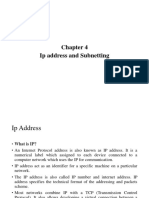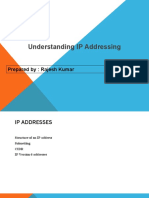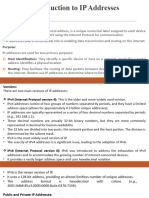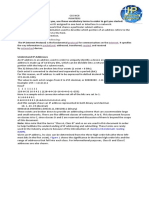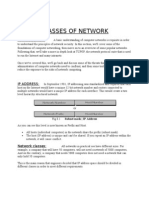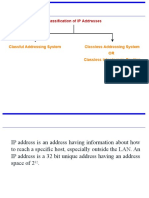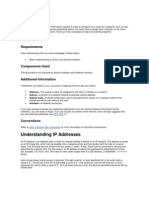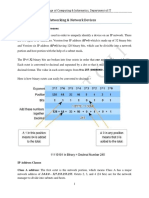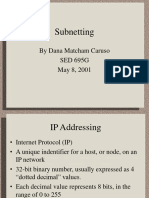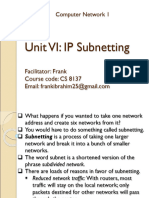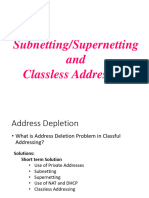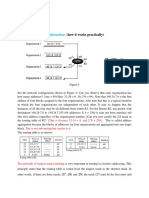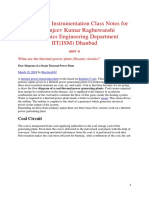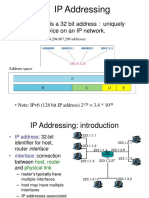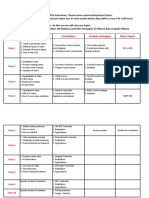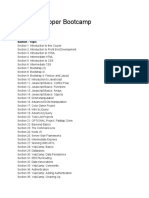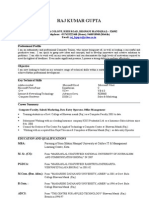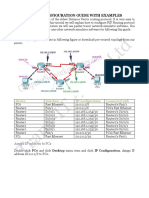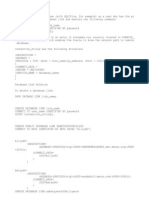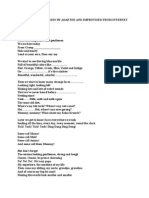0% found this document useful (0 votes)
200 views6 pagesNotes Subnetting
Subnetting allows a single IP network address to be divided into multiple logical subnetworks to improve efficiency and reduce routing complexity. This is done by using a subnet mask that defines which bits identify the network versus the hosts. For example, extending the mask of the Class C network 204.17.5.0 from 255.255.255.0 to 255.255.255.224 would create 8 subnets of 30 addresses each. Subnet masks are specified in CIDR notation such as /27 to indicate the number of contiguous 1 bits in the mask. Routers require an IP address for each connected subnet. Special addresses like network addresses of all 0s and broadcast addresses of all 1s are reserved for specific functions.
Uploaded by
viratCopyright
© © All Rights Reserved
We take content rights seriously. If you suspect this is your content, claim it here.
Available Formats
Download as PDF, TXT or read online on Scribd
0% found this document useful (0 votes)
200 views6 pagesNotes Subnetting
Subnetting allows a single IP network address to be divided into multiple logical subnetworks to improve efficiency and reduce routing complexity. This is done by using a subnet mask that defines which bits identify the network versus the hosts. For example, extending the mask of the Class C network 204.17.5.0 from 255.255.255.0 to 255.255.255.224 would create 8 subnets of 30 addresses each. Subnet masks are specified in CIDR notation such as /27 to indicate the number of contiguous 1 bits in the mask. Routers require an IP address for each connected subnet. Special addresses like network addresses of all 0s and broadcast addresses of all 1s are reserved for specific functions.
Uploaded by
viratCopyright
© © All Rights Reserved
We take content rights seriously. If you suspect this is your content, claim it here.
Available Formats
Download as PDF, TXT or read online on Scribd
/ 6




